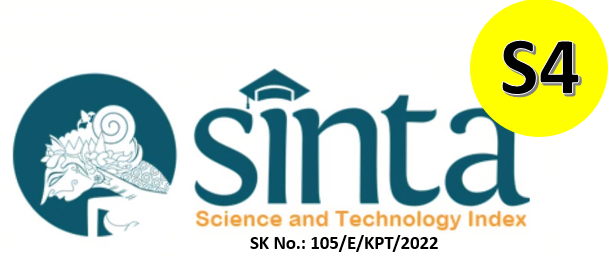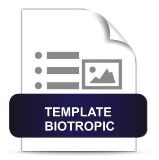Produksi Biomassa, Analisis Nutrisi dan Senyawa Bioaktif Jamur Grigit (Schizophyllum commune)
DOI:
https://doi.org/10.29080/biotropic.v7i2.1932Keywords:
mycelial biomass, nutrient, bioactive compound, Schizophyllum communeAbstract
Schizophyllum commune, a wild edible mushroom, has gained significant attention due to its potential as a valuable source of biomass, nutrients, and bioactive compounds. This study aims to explore the production of mycelial biomass and analyze its nutrient and bioactive compound content to be applied as a raw material in food production. The Schizophyllum commune was cultivated in potato dextrose broth media with temperature (25, 30, 35, and 40oC) and pH treatments (3, 7, and 8) to determine the optimal conditions for biomass production. Mycelia biomass was harvested and extracted. Nutrient and bioactive compounds were analyzed. Results showed that 30oC and pH 7 give the highest biomass production. Proximate analysis revealed that the mushroom's mycelia biomass contained high protein, low fat, and fiber. The analysis also demonstrated a rich profile of bioactive compounds, including flavonoid and phenolic compounds, respectively1 2,32 ± 0,95 dan 415,72 ± 15,23 g/100 g mycelia dry weight. Schizophyllum commune exhibits promising prospects for mycelial biomass production.
Downloads
References
Asociation of Official Analytical Chemists of Official Analytical Chemists. 1990 Official Method of Analysis, (fifteenth ed.), Washington DC, USA
Ayimbila, F., & Keawsompong, S. 2023. Nutritional Quality and Biological Application of Mushroom Protein as a Novel Protein Alternative. Current nutrition reports, 12(2), 290–307. https://doi.org/10.1007/s13668-023-00468-x
Bains, A., Chawla, P., Kaur, S., Najda, A., Fogarasi, M., & Fogarasi, S. 2021. Bioactives from Mushroom: Health Attributes and Food Industry Applications. Materials (Basel, Switzerland), 14(24), 7640. https://doi.org/10.3390/ma14247640
Bakratsas, G., Polydera, A., Nilson, O., Chatzikonstantinou, A. V., Xiros, C., Katapodis, P., & Stamatis, H. 2023. Mycoprotein Production by Submerged Fermentation of the Edible Mushroom Pleurotus ostreatus in a Batch Stirred Tank Bioreactor Using Agro-Industrial Hydrolysate. Foods, 12(12), 2295. MDPI AG. Retrieved from http://dx.doi.org/10.3390/foods12122295
Benson, K. F., Stamets, P., Davis, R., Nally, R., Taylor, A., Slater, S., & Jensen, G. S. 2019. The mycelium of the Trametes versicolor (Turkey tail) mushroom and its fermented substrate each show potent and complementary immune activating properties in vitro. BMC complementary and alternative medicine, 19(1), 342. https://doi.org/10.1186/s12906-019-2681-7
Bhambri, A., Srivastava, M., Mahale, V. G., Mahale, S., & Karn, S. K. 2022. Mushrooms as Potential Sources of Active Metabolites and Medicines. Frontiers in microbiology, 13, 837266. https://doi.org/10.3389/fmicb.2022.837266
Bozin, B., Mimica-Dukic, N., Samojlik, I., Goran, A., Igic, R. 2008. Phenolics as antioxidants in garlic (Allium sativum L., Alliaceae). Food Chem. 111: 925–929. doi.org/10.1016/j.foodchem.2008.04.071
Deng, Y., Huang, Q., Hu, L., Liu, T., Zheng, B., Lu, D., Guo, C., & Zhou, L. 2021. Enhanced exopolysaccharide yield and antioxidant activities of Schizophyllum commune fermented products by the addition of Radix Puerariae. RSC advances, 11(60), 38219–38234. https://doi.org/10.1039/d1ra06314f
Desai, J. 2018. Candida albicans Hyphae: From Growth Initiation to Invasion. Journal of Fungi, 4(1), 10. MDPI AG. Retrieved from http://dx.doi.org/10.3390/jof4010010
Finnigan, T. J. A., Wall, B. T., Wilde, P. J., Stephens, F. B., Taylor, S. L., & Freedman, M. R. 2019. Mycoprotein: The Future of Nutritious Nonmeat Protein, a Symposium Review. Current developments in nutrition, 3(6), nzz021. https://doi.org/10.1093/cdn/nzz021
Gamarra-Castillo, O., Echeverry-Montaña, N., Marbello-Santrich, A., Hernández-Carrión, M., & Restrepo, S. 2022. Meat Substitute Development from Fungal Protein (Aspergillus oryzae). Foods (Basel, Switzerland), 11(19), 2940. https://doi.org/10.3390/foods11192940
Gwon, J. H., Park, H., & Eom, A. H. 2022. Effect of Temperature, pH, and Media on the Mycelial Growth of Tuber koreanum. Mycobiology, 50(4), 238–243. https://doi.org/10.1080/12298093.2022.2112586
Hu, Y., Xue, F., Chen, Y., Qi, Y., Zhu, W., Wang, F., Wen, Q., Shen J. 2023. Effects and Mechanism of the Mycelial Culture Temperature on the Growth and Development of Pleurotus ostreatus (Jacq.) P. Kumm. Horticulturae, 9(1), 95. MDPI AG. Retrieved from http://dx.doi.org/10.3390/horticulturae9010095
Kalac P. (2009). Chemical composition and nutritional value of European species of wild growing mushroom: a review Food Chem., 113, pp. 9-16
Lattimer, J.M. & Haub, M.D. 2010. Effects of dietary fiber and its components on metabolic health. Nutrients, 2010(2), 1266-1289
Li J, Zhang J, Chen H, Chen X, Lan J, Liu C. Complete mitochondrial genome of the medicinal mushroom Ganoderma lucidum. PLoS One. 2013;8(8):e72038. doi: 10.1371/journal.pone.0072038.
Matsumura, Y., Kitabatake, M., Kayano, S., & Ito, T. 2023. Dietary Phenolic Compounds: Their Health Benefits and Association with the Gut Microbiota. Antioxidants, 12(4), 880. MDPI AG. Retrieved from http://dx.doi.org/10.3390/antiox12040880
Noverita, Armanda, D., P., Matondang, I., Setia, T., M., & Wati, R. 2019. Keanekaragaman dan Potensi Jamur Makro di Kawasan SuakaMargasatwa Bukit Rimbang Bukit Baling (SMBRBB) Propinsi Riau, Sumatera. Jurnal Pro-Life, 6(1), 26-43
Preecha C., Thongliumnak S. Bag opening technique for bag spawn culture of spit gill mushroom (Schizophyllum commune) Int. J. Agric. Technol. 2015;11(2):367–372.
Procházka, P., Soukupová, J., Mullen, K. J., Tomšík, K., Jr, & Čábelková, I. (2023). Wild Mushrooms as a Source of Protein: A Case Study from Central Europe, Especially the Czech Republic. Foods (Basel, Switzerland), 12(5), 934. https://doi.org/10.3390/foods12050934
Rahmawati, Linda, R., & Tanti, N., Y. 2018. Jenis-Jenis Jamur Makroskopis Anggota Kelas Basidiomycetes di Hutan Bayur, Kabupaten Landak, Kalimantan Barat. Jurnal Mikologi Indonesia, 2(2), 56-66
Takemoto, S., Nakamura, H., Erwin, Imamura, Y., Shimane, T., 2010. Schizophyllum commune as a Ubiquitous plant parasite. JARQ 44(4), 357–364. https://www.jircas.affrc.go.jp.
Valverde ME, Hernández-Pérez T, Paredes-López O. Edible mushrooms: improving human health and promoting quality life. Int J Microbiol. 2015;2015:376387. doi: 10.1155/2015/376387. Epub 2015 Jan 20. PMID: 25685150; PMCID: PMC4320875.
Wikandari, R., Tanugraha, D. R., Yastanto, A. J., Manikharda, Gmoser, R., & Teixeira, J. A. 2023. Development of Meat Substitutes from Filamentous Fungi Cultivated on Residual Water of Tempeh Factories. Molecules (Basel, Switzerland), 28(3), 997. https://doi.org/10.3390/molecules28030997
Yim H.S., Chye F.Y., Rao V., Low J.Y., Matanjun P., How S.E.C.W. Optimization of Extraction Time and Temperature on Antioxidant Activity of Schizophyllum commune Aqueous Extract Using Response Surface Methodology. J. Food Sci. Technol. 2013;50:275–283. doi: 10.1007/s13197-011-0349-5
Yusran, Y., Erniwati, E., Khumaidi, A., Pitopang, R., & Jati, I. R. A. P. 2023. Diversity of substrate type, ethnomycology, mineral composition, proximate, and phytochemical compounds of the Schizopyllum commune Fr. in the area along Palu-Koro Fault, Central Sulawesi, Indonesia. Saudi journal of biological sciences, 30(4), 103593. https://doi.org/10.1016/j.sjbs.2023.103593
Zhishen, J., Mengcheng, T., Jianming, W. 1999. The determination of flavonoid contents in mulberry and their scavenging effects on superoxide radicals. Food Chem. 64: 555–559. doi.org/10.1016/S0308-8146(98)00102-2
Downloads
Published
How to Cite
Issue
Section
License
Copyright (c) 2023 Rida Oktorida Khastini, Rani Rahmawati

This work is licensed under a Creative Commons Attribution-NonCommercial-ShareAlike 4.0 International License.













